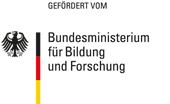Spatial impacts of urban structures on micrometeorological variables WaSiG | Publikation | Regenwasser
Vorschau
Merle Koelbing, Tobias Schuetz, and Markus WeilerHydrology, Faculty of Environment and Natural Resources, University of Freiburg, Germany (merle.koelbing@hydrology.uni-freiburg.de) The heterogeneity of urban surfaces including buildings and the urban vegetation causes high variability ofmicrometeorological variables on small spatial scales which makes it hard to observe or even predict climateconditions and in particular evapotranspiration with high resolution on the scale of entire cities. Regarding futureclimate changes and their impacts on urban climate and hydrology the predictability of these small scale variationsbecomes more and more relevant i.e. for city planners to improve the development of appropriate mitigationstrategies. Therefore, new transfer functions for meteorological variables are needed, which consider the structuralvariability in urban areas and its impacts on the energy balance (shading effects, ventilation, lateral longwaveenergy fluxes).
Zum Produkt
Verweis: http://adsabs.harvard.edu/abs/2016EGUGA..1814996K
Ansprechperson
Merle Koelbing
M. merle.koelbing@hydrology.uni-freiburg.de


 English
English



